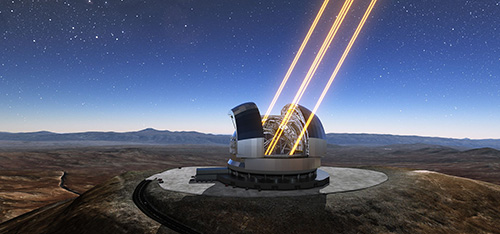
ESO, the European Southern Observatory, is the foremost intergovernmental astronomy organisation in Europe and the world's most productive astronomical observatory. ESO provides state-of-the-art research facilities to astronomers and is supported by Austria, Belgium, the Czech Republic, Denmark, Finland, France, Germany, Ireland, Italy, the Netherlands, Poland, Portugal, Spain, Sweden, Switzerland and the United Kingdom, along with the host state of Chile. Several other countries have expressed an interest in membership.
ESO's main mission, laid down in the 1962 intergovernmental Convention, is to provide state-of-the-art research facilities to astronomers and astrophysicists, allowing them to conduct front-line science in the best conditions.
By building and operating a suite of the world's most powerful ground-based astronomical telescopes enabling important scientific discoveries, ESO offers numerous possibilities for technology spin-off and transfer, together with high technology contract opportunities and is a dramatic showcase for European industry.

ESO is presently building the 39-metre Extremely Large Telescope, the ELT ![]() which will become "the world's biggest eye on the sky".
which will become "the world's biggest eye on the sky".
ESO Headquarters (comprising the scientific, technical and administrative centre of the organisation) are located in Garching near Munich, Germany. In Chile, ESO operates the Vitacura centre as well as three unique observing sites with a soon coming 4th one:
All Belgian research teams active in the field of astronomy and astrophysics are represented in the Belgian National ESO-Committee (BNEC). It serves as an information and coordination platform in order to optimise the Belgian participation in ESO activities.
ESO website ![]()
ESO Belgian Day 2022
Belgian ESO Industry Day 2011
Belgian ESO Industry Day 2015
Sophie Pireaux
ESO Council member
ESO Industrial Liaison Officer - ILO
BELSPO, Space Research & Applications
Alain Heynen
Finance committee member
BELSPO, Direction of Finance